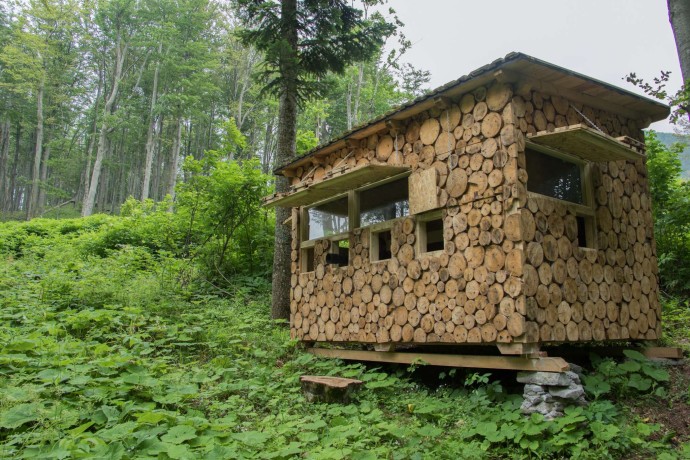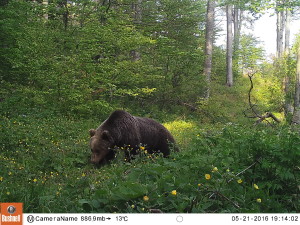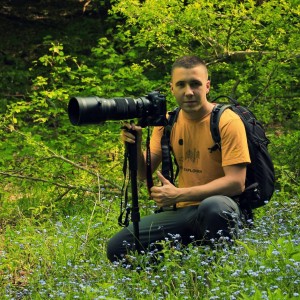Over the last two years, a new venture into wildlife watching and simultaneous wildlife research led to the construction and set up of two wildlife hides in the Velebit Mountains. This summer the hides opened their doors to the public and have already shown to be a success in various fields. As an attractive new nature travel offering, the hides are a small but relevant step forward to further develop a nature-based economy in Croatian Velebit Mountains.

Using the experience gained from a recent trip to renowned areas in Finland for wildlife photography, the Rewilding Velebit team worked with local designers and builders to turn the idea into reality and construct the two hides. The hides have an interesting exterior design that mimics a log pile thus helping the hides to look familiar for wildlife in this area, which is used to such piles. After finalizing construction of the two hides in late 2015, transport and set up took place high in the mountains and the hides were tested to withstand the harsh mountain winter, battered by cold winds and heavy snow.

Now that the summer growth has encapsulated them, along with camera traps, the hides are proving very valuable for wildlife monitoring and research. Over the last few months the cameras have shown a strong wildlife presence in this mountainous area. The animals are slowly adjusting to the hides and to the extended presence of people. As a new nature-based destination and activity in nature, wildlife watching is an experience difficult to transform into words. When in a hide, engulfed with wild nature, one gets a unique opportunity to step out and become the observer with fully sharpened senses of sounds, smells and sight and can perceive the wonder of nature as it really is. And if you are lucky, you can see wildlife from a short distance which is a fantastic experience in itself – and photographing or filming brings memories that last forever. The average wildlife activity lasts around 4-6 hours, and while silently waiting to see what may appear out of the forest, the time becomes seamless and the sunset often comes as a surprise.

Local wildlife photographer and guide Nino Salkic who has tested the hides says: “Being in the hides waiting for wildlife is like meditating, I always feel energized regardless of what I see.”
As a third generation photographer, Salkic’s love for nature was quickly matched with his growing interest in photography, and as he was born and raised in Velebit, he feels most at home in the heart of the Velebit Mountains. Over the past year, Nino has been involved in all aspects of the wildlife hide development and with the assistance of wildlife cameras he is collecting and keeping up to date information about the wildlife movements in the area.
In an effort to stimulate nature-based tourism in the area, the hides create benefits for the local community through employment and other tourism demands, and also assist with the continued research and work done by the Rewilding Velebit team. Having such facilities is the first step in developing nature destinations where travelers can engage with the vast array of wildlife and nature in the area. The extended benefits of these travelers reaches guest houses, local markets and other tourism activities in the region. The costs of the wildlife watching experience will include a charitable donation to the Rewilding Velebit Association, who will invest this into its rewilding activities in the area.
The hides are spacious and insulated, quite comfortable to seat 4 – 6 people and have both viewing windows and camera ports. They have two comfortable beds for overnight enthusiasts and photographers as well as simple toilet facilities. The luxury of solar generated power for those who need it is also available.
These new experiences are available for booking until the first snows in October/November. For those wanting to develop a wildlife hide, take a look here or download the only available publication on the market, produced by Rewilding Europe, for info about how to design and build professional wildlife watching hides here.
